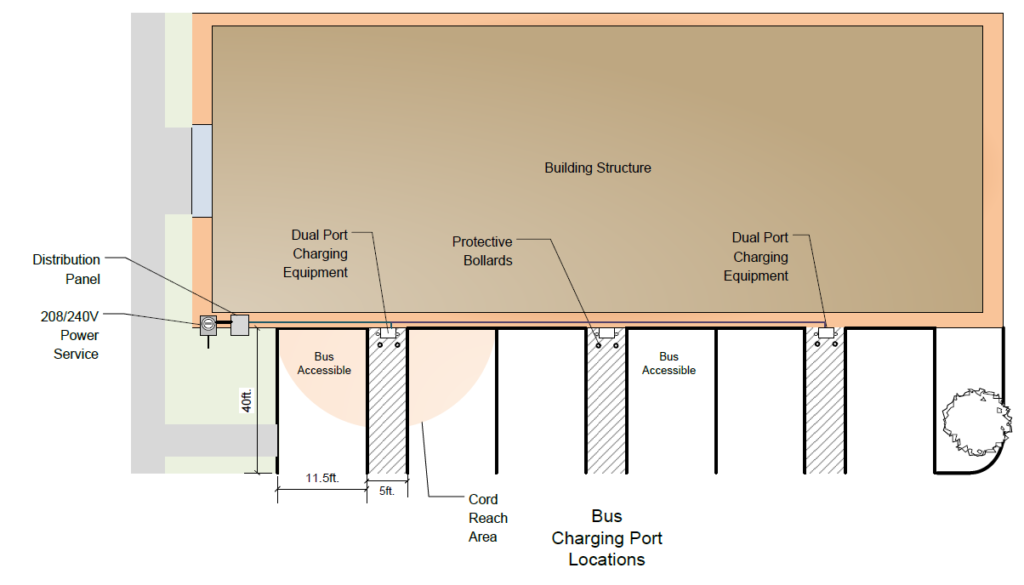Authored by VEIC and Virginia Clean Cities

Are you considering adding one or more electric school buses (ESBs) to your fleet? Have you heard of Virginia DEQ’s Clean School Bus Program and are thinking about applying for the second round of funding this fall? Here’s a quick overview of the major considerations for where and how to install charging stations at your bus parking facilities.
Adding Bus Charging Stations to Your Facilities
Any fleet considering a potential ESB project should first reach out to their local electricity provider/utility. They can most likely help you understand your electricity usage, and how one or more ESBs will impact your energy bills. They can also visit your site to talk through your project, review your facility, determine what type of infrastructure upgrades may be required and the most cost-effective siting for your charging stations.
Conferring with your utility creates an opportunity to discuss rates and any special programs they may have to help make ESB deployment and charging more affordable. Early coordination with your utility will also be crucial to ensure any electrical service upgrades needed can be done as time and cost-effectively as possible.
The cost of installing one or more charging stations can vary widely depending on site characteristics, quantity, and type of charging equipment. That said, there are two primary considerations that drive the cost of installation:
- The distance from the power source to the charging station: Costs associated with connecting a charging station to the power source can account for 40% or more of the installation cost. If possible, minimize your installation costs by installing the station as close as possible to an existing power source that has sufficient capacity to avoid service upgrades. Longer distances between the charging station location and power source increase costs by requiring more electric circuit components and conduit-runs, as well as trenching or linear drilling costs for underground conduit.
2. Whether the charging station is mounted to an existing wall, or installed as a free-standing unit. Wall mounted charging stations are generally less expensive because they don’t require a free-standing pedestal (or a concrete pad) or trenching to connect them to a power source. Whether wall-mount units can work for a school bus depends on the location and position of bus parking relative to the building. The figure below provides an example of a low-cost Level 2 charging station installation setup – wall mounted near an existing power supply.

Placement of the charging station is also dependent on whether your buses pull forward or back into their parking locations, and whether the charging port on your ESBs will be located on the front or the back of the vehicle, to ensure adequate cord length and minimize cord tripping/damage hazards.
This is a high-level overview of some of the main considerations to start planning for your ESB project charging needs. For more details, check out VEIC’s Electric School Bus Charging Equipment Installation Guide.
Curious about the various electric buses on the market and the types of routes for which they’re best suited? Or the types of electric school bus charging stations and major considerations for selecting the right option for your fleet? We covered those topics in our last two blog posts on Charging Stations and Buses and Routes!
For more information, check out VEIC’s Electric School Bus Resources for detailed guidance on how to plan your first electric school bus deployment.
